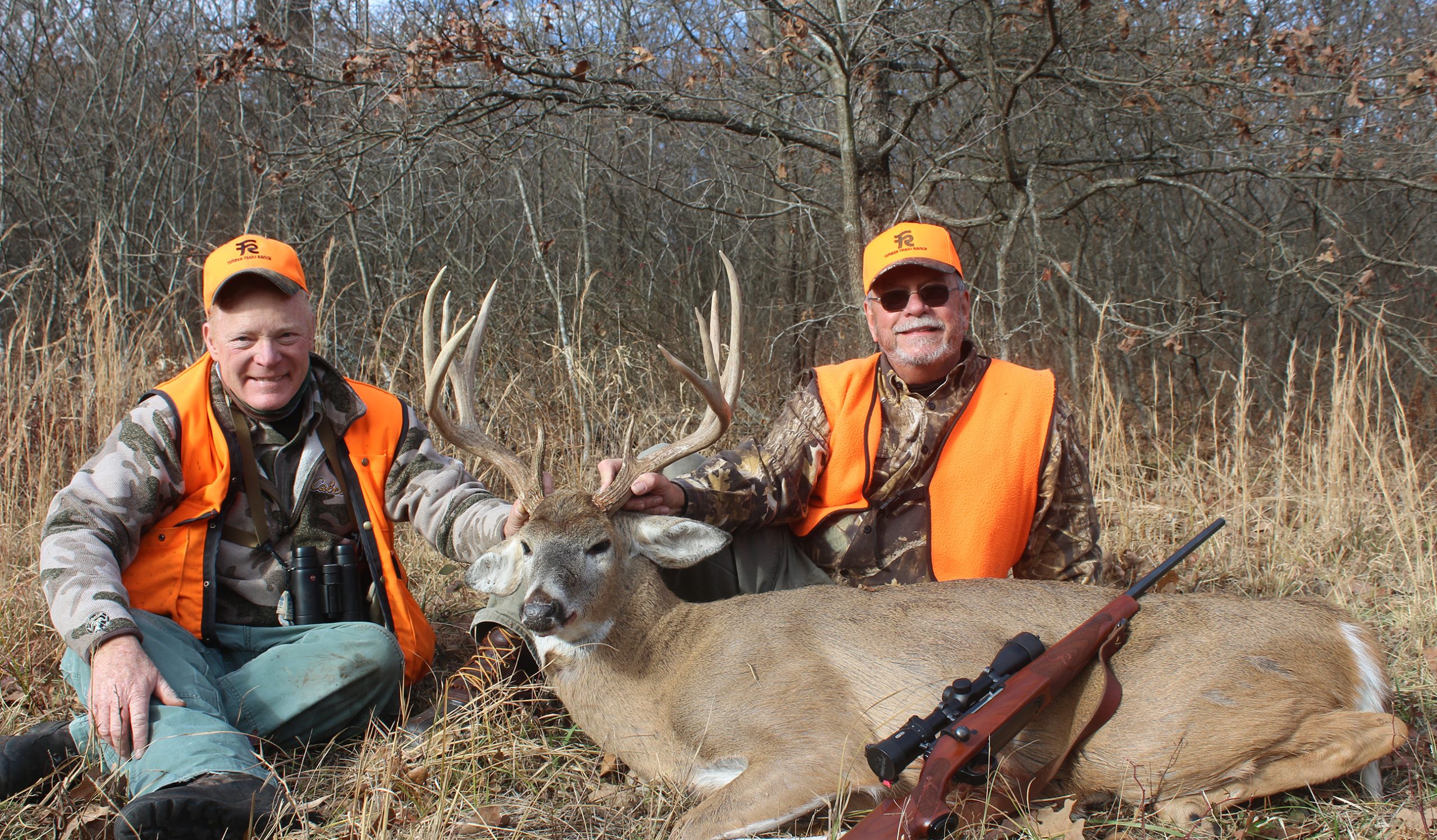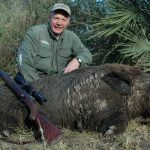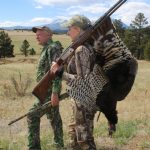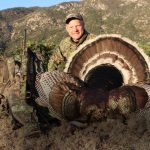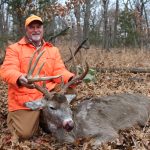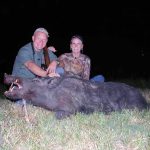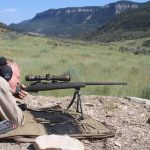From one of the nation’s earliest seasons, in coastal California, to one of the latest, in Kansas.
Photo above: Dan Guillory shot this Kansas buck while it was tending a scrape sixty yards from his stand. When a buck like this shows up, don’t hesitate.
I split my time between California’s Central Coast and southeast Kansas. That puts a big spread between what I think of as “deer season.” On the Central Coast, archery season starts in July, and rifle season starts on the second Saturday in August. It’s one of earliest deer seasons in the United States.
Our short Kansas rifle season lasts for twelve days starting the Wednesday after Thanksgiving. Since Turkey Day slides, that Opening Day slides back and forth. In 2024, it starts on December 4, the latest the calendar allows. Although preceded by three months of bowhunting, plus a youth hunt and muzzleloader season, that makes it one of the latest primary deer seasons in the country.
American hunters number about 12 million, the largest hunting public in the world. Among us are big-game hunters, turkey hunters, waterfowl hunters, small-game hunters, upland hunters, varmint hunters, more. Many of us take advantage of multiple opportunities and hunt a variety of game, but deer hunters are the single largest group, possibly 10 million of us. According to surveys, few Americans travel to hunt. Most of us pursue game close to home. So, we hunt our deer. In the West, mostly mule deer, although Arizonans love their Coues deer. On the Pacific Coast, the blacktail is king. Across two-thirds of the country, the whitetail reigns supreme. Doesn’t matter what your local deer are. They’re your deer, and your deer season is important to you.
I don’t follow the normal pattern of only hunting close to home. In most years, I hunt in multiple states. Even so, both of “my” deer seasons are important to me.
Camp Pendleton, California, was my first post in the Marines. My tattered Hunter Safety card is dated from the base natural resources office, 1975. Deer hunting on base was by drawing. In those days, the Kansas deer herd was still building. Deer hunting was for residents only, all tags by drawing. I discovered the California Coast Zone deer hunting. Over-the-counter tags, two-buck limit, six-week rifle season. Close enough to dash up for a weekend.
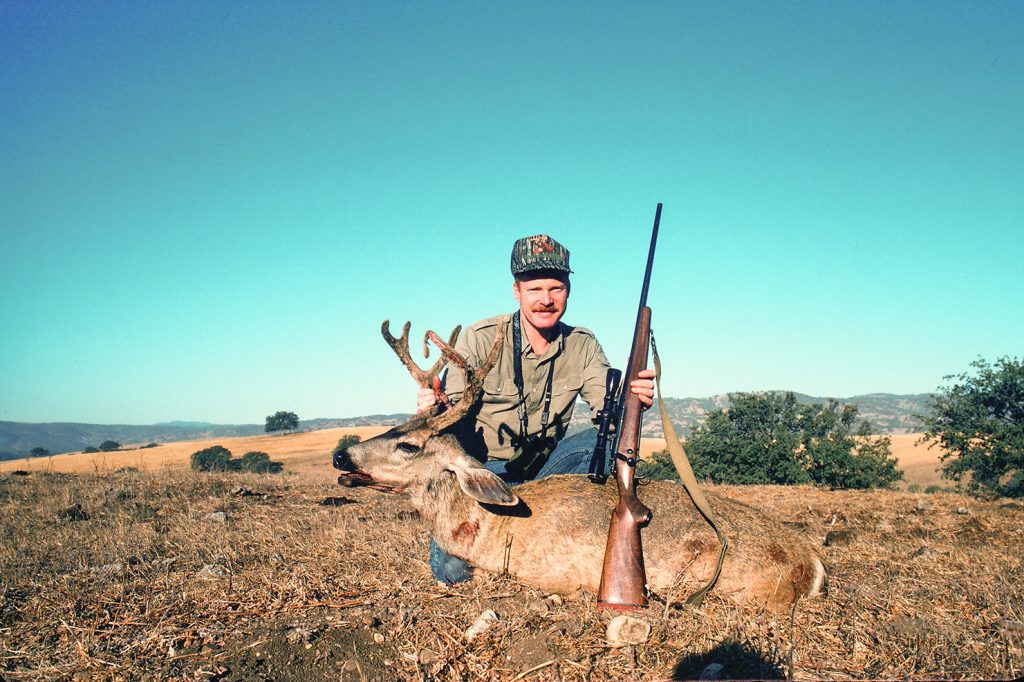
Although mornings are pleasant, midday temps often exceed 100 degrees F. California’s Central Coast has the biggest average low-to-high temperature swing in the Lower 48. Evenings eventually cool, but the afternoon hunt is short. If you get a buck in late morning, it’s a race against spoilage to the cooler. It’s difficult hunting for bucks of modest size, but I embraced the Coast Zone, and for many years it was “my” deer season. During the years I worked in Los Angeles, I’d often run up to the Central Coast, and I settled there after I left the editorial office.
At first, August deer hunting in the blazing coastal hills seemed crazy but, like most North American seasons, there’s method in the madness. Our coastal blacktails have no winter stress. Winter is the mild rainy season, plenty of food and water. Their tough time is the long, hot, dry summer. By mid-August, most bucks are in hard antler. And they rut early, so that fawns can be dropped in late spring and gain strength before the harsh summer.
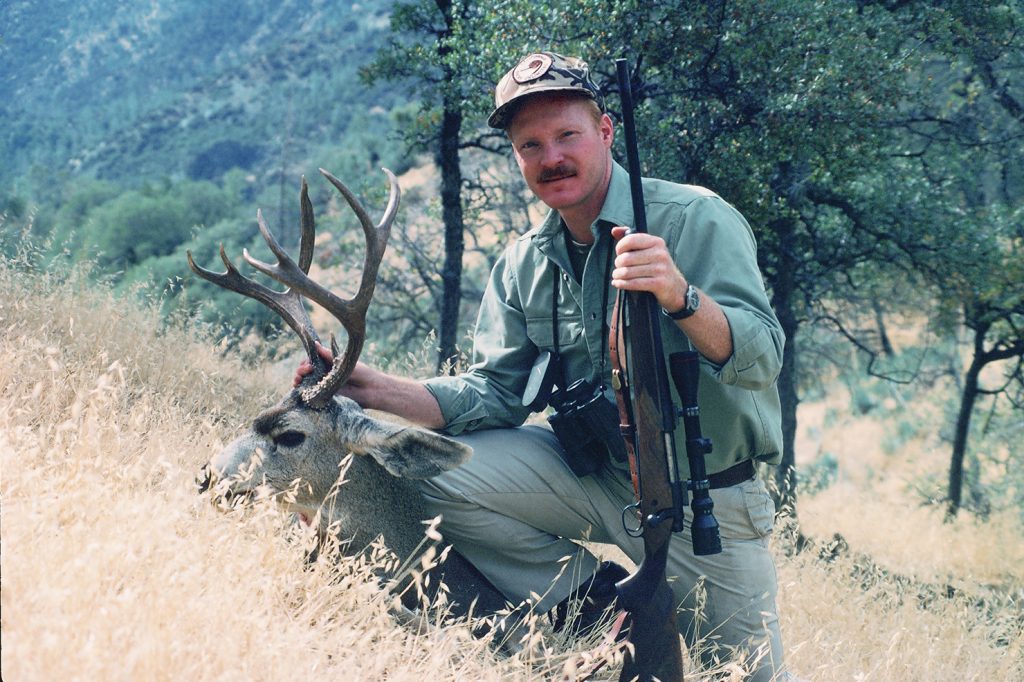
The season carries on through the third week in September. By then, the rut is on, and temps have dropped a bit. So, if one is patient, the end of the season is best. When I was a California resident, I fought the brutal August heat with relish. I took some nice blacktails early (and raced to the cooler), but my better coast bucks came toward the end of the season.
Today, I buy the basic licenses to hunt birds and hogs, but I don’t spring for a nonresident deer tag every year. When I don’t, I miss it. Last September, I was in Kansas working on food plots and Donna was back on the Central Coast. She got an invite for a last-chance deer hunt. She bought a license, gathered her .270, and shot a nice buck on the last day of the season. Central Coast buddy John Sonne has a ranch north of town. Since that’s his deer season (and his ranch), he hunts hard from start to finish. This season was tough, very hot, no deer moving. He just sent me a pic of his last-day buck, a monster for our area. That buck had never been seen; it showed up on the last day.
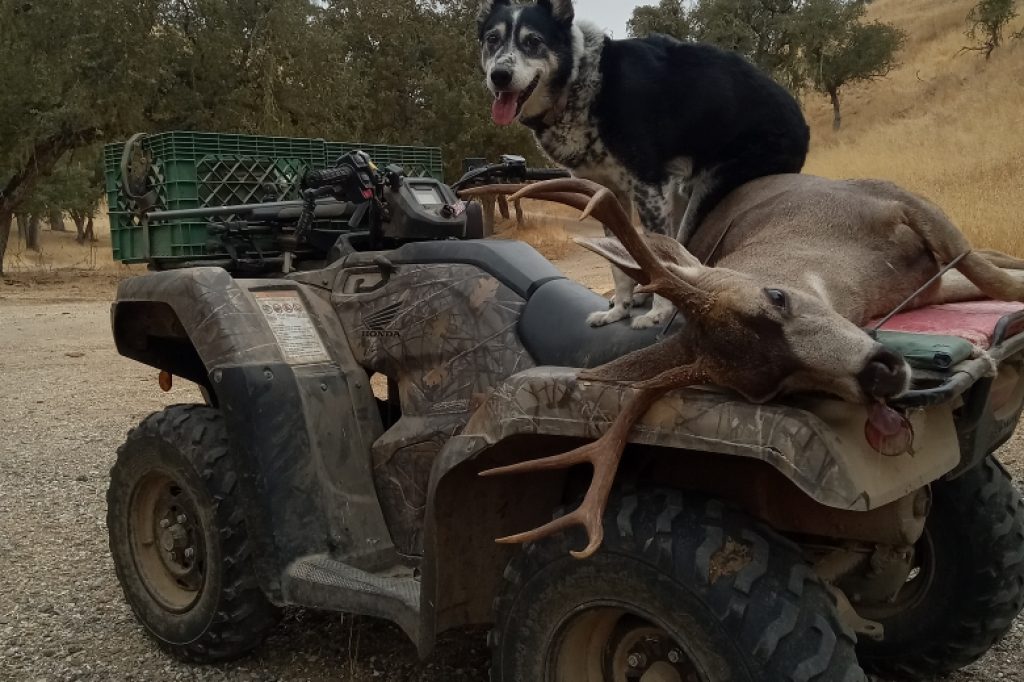
For most of us, deer season lies ahead. In most states, October and November is prime time, while “my” Kansas rifle season is still two months away. Kansas opened a modern deer season in 1964, and it was residents-only for thirty years. Today, the state offers 30,000 nonresident permits. They are by drawing only, specifying unit and season. When we bought the Kansas farm, I could initially buy a “nonresident hunt own land” whitetail permit. Now that I’m a Kansas resident, I buy an “any whitetail” permit that’s good statewide from September archery through the end of rifle season, then again archery to the end of the year. Pretty good deal for a kid who grew up with no deer season.
I (mostly) wait for rifle season. With a blown shoulder, I no longer bowhunt, although I occasionally go out with a crossbow. I have no excuse for not participating in the muzzleloader season. Except that I’m fascinated by rifles, however limiting the season, and have trouble getting excited about other launching platforms.
At least in theory, states set seasons based on management goals, with archery seasons commonly set before firearms. Our Kansas rifle season was set decades ago, intentionally a post-rut hunt, the idea for our few bucks to breed before primary deer season.
We have a lot more deer now, but seasons have changed little. Most serious Kansas whitetail hunters do at least some bowhunting. We see good pre-rut activity (rubs) in October, with scrapes and rutting activity in early November. The biggest buck I’ve taken on my place, with a crossbow, was rutting hard. It’s easy to remember the date, November 12, because it was my birthday. I figure the rut in southeast Kansas peaks about November 20. This year, that’s two full weeks before rifle season.
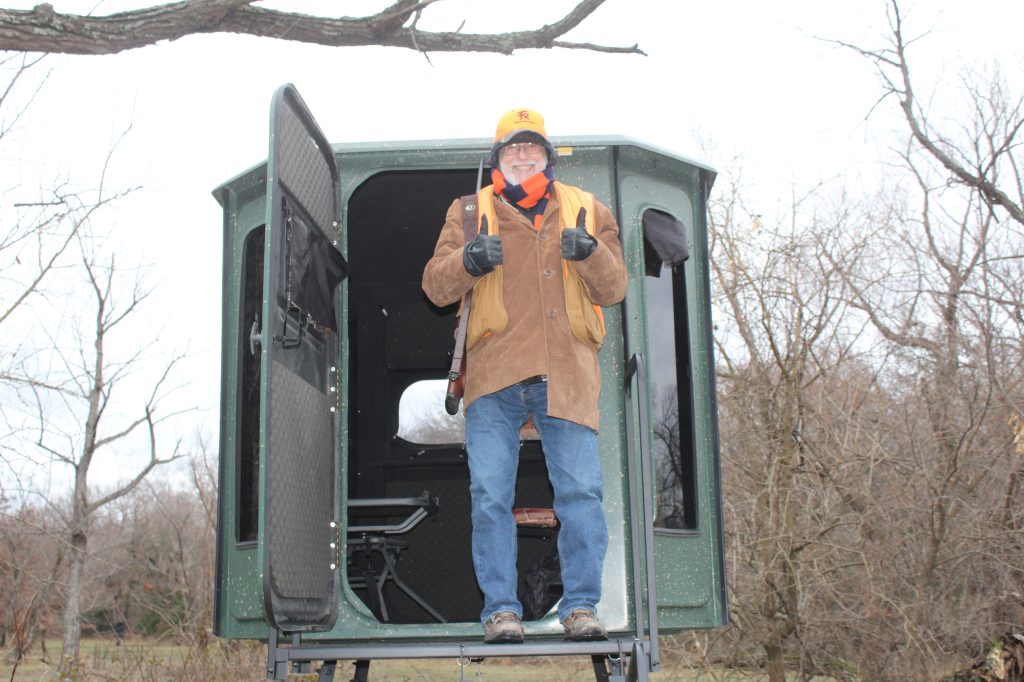
Well, seasons are when they are, unlikely to change, and Kansas rifle season is my primary deer season. Whitetail hunters talk about the peak of the rut as if it was set in stone. Fortunately, it is not. Timing varies, and the whitetail rut is not a one-night stand. Since our rifle season is based on Thanksgiving, it moves around. When it starts at the end of November, the peak may have come and gone, but we still see good rutting activity. Weather matters. A couple years ago, a warm front moved in, 30 degrees F warmer on opening morning than the evening before. Understandably, our deer shut down. Few sightings and no bucks on opening day, or the next. Friday morning was cooler, and deer started moving. Lee Newton shot a great buck, and all camp tags were filled by sunset Saturday.
Hunting our coastal blacktails is quite different from hunting thick-timber whitetails. On the Central Coast, all hunting is glassing and stalking; in Kansas, with a foot of oak leaf litter, stand-hunting is the only option. There’s also a difference in mindset. With a six-week coastal season, patience is possible. Don’t like the August heat? Don’t like the moon phase? Wait until the weather cools or the moon wanes. With our twelve-day Kansas season, we have no such luxury. We can’t change the weather—or wait it out—and the moon phase is what it is. There’s no choice but to go for it, whatever the conditions.
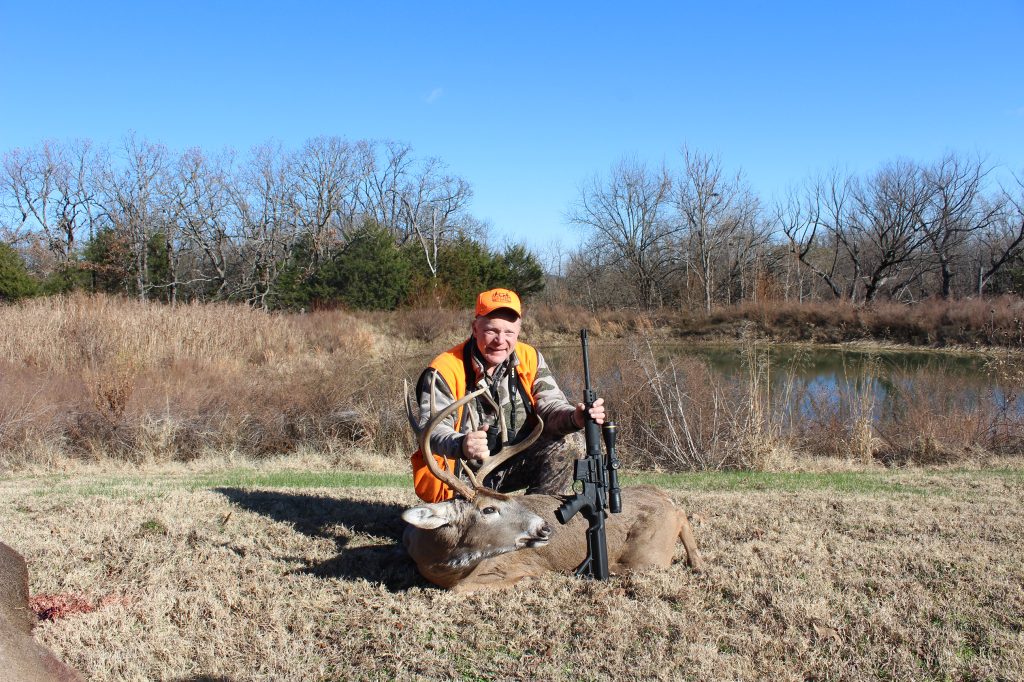
This year the calendar puts Opening Day as late as it can be. With luck, it should be getting frosty, which will help. I haven’t even looked at the moon phase, can’t do anything about it. I expect the primary rut to be almost over.
There is good news. The secondary whitetail rut, as unbred does recycle, is pronounced in our area, probably because of a high buck-to-doe ratio. Early December is when I expect to see a beleaguered doe pursued by multiple bucks. Not all our hunters see this spectacle, but it’s not uncommon. One opening day—the last time our season started this late–I shot a fine 8-pointer, one of six bucks pursuing a lone doe. Sometimes they sneak through, other times dash past without offering a shot. You must be on your toes and ready. It’s unlikely you’ll see a buck more than once, and you probably won’t see him for long.

